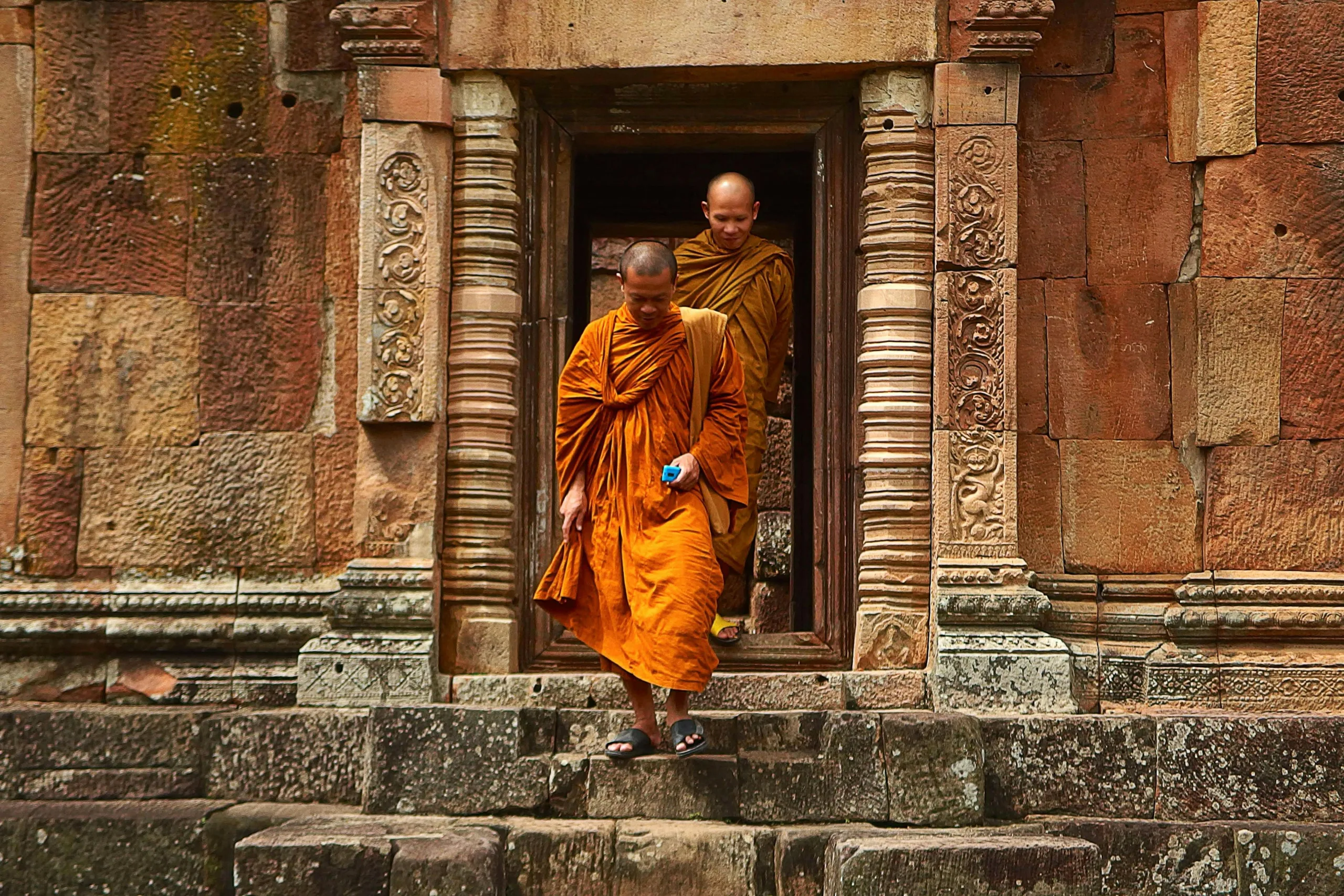If you’re planning to explore Thailand, one of the best ways to dive into its culture is by visiting its breathtaking temples.
Thai temples, known as “wats,” are famous for their exquisite architecture, historical significance, and peaceful ambiance.
So, join us as we take you on a journey through the 10 most beautiful temples, share practical tips, and provide insights to make your experience unforgettable.
And, if you’re looking for another budget-friendly gem that’ll make you lose your mind, make sure to check out Bali – WE LOVE it!
What Makes Thai Temples Special
Thai temples are more than just religious landmarks; they are cultural treasures that showcase the soul of Thailand. Their intricate carvings, golden spires, and serene surroundings tell stories of faith and artistry passed down through generations. Visiting these temples is like stepping into a living museum, where every corner reveals a piece of history.
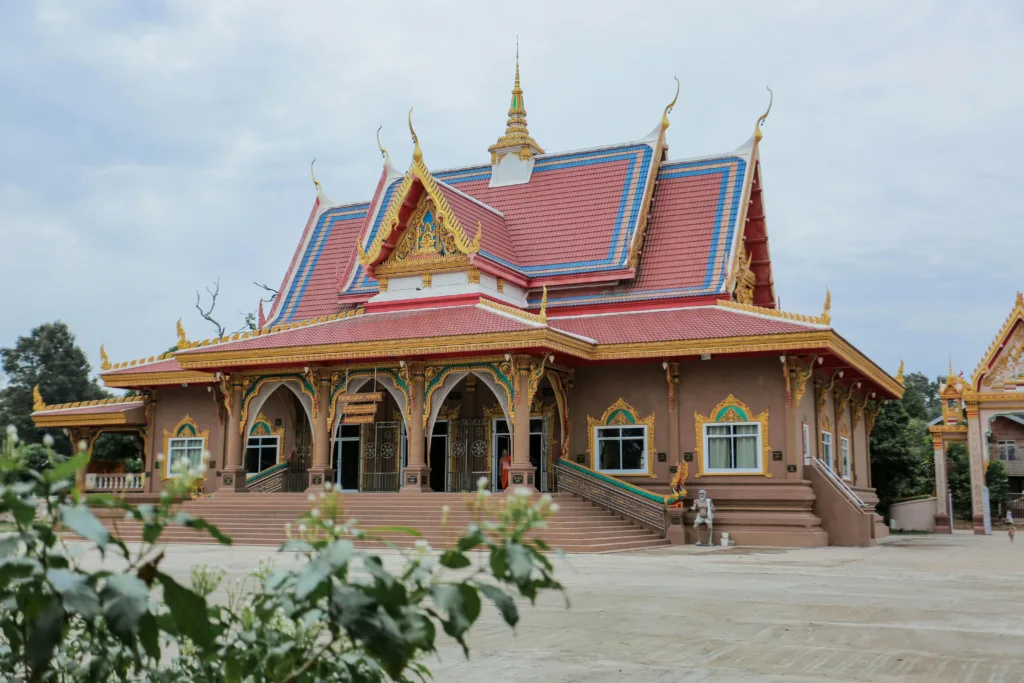
Each temple features unique architectural influences, from the intricate Khmer designs of Wat Phra Si Sanphet to the modern creativity of Wat Rong Khun. They blend tradition with regional artistry, making every temple visit a new and exciting experience. By exploring these landmarks, you’ll gain a deeper understanding of Thailand’s cultural and spiritual identity.
Temples also serve as vibrant community centers, hosting local festivals, meditation retreats, and prayer ceremonies. Observing or participating in these activities adds a personal touch to your visit. This makes temple-hopping an essential part of any plan to explore Thailand.
The 10 Most Beautiful Thai Temples That You Must See On Your Explore Thailand Trip
1. Wat Phra Kaew (Temple of the Emerald Buddha)
Wat Phra Kaew, located in Bangkok’s Grand Palace, is a must-see when you explore Thailand. This sacred temple houses the Emerald Buddha, a revered statue carved from jade in the 14th century. The temple’s intricate architecture, with golden spires and elaborate murals, is awe-inspiring.
Known as the spiritual heart of Thailand, Wat Phra Kaew plays a central role in royal ceremonies. But, keep in mind the Buddha’s attire is changed seasonally by the King, symbolizing national prosperity. Walking through the temple feels like stepping into Thailand’s rich history.
But, the temple is part of the larger Grand Palace complex, which adds to its grandeur. Visitors must wear modest attire, and they may not take photographs inside sacred areas.. A visit to Wat Phra Kaew offers a perfect introduction to Thailand’s culture and spirituality.
2. Wat Pho (Temple of the Reclining Buddha)
If you’re visiting Bangkok, Wat Pho is an essential stop as you explore Thailand. The temple is home to the magnificent Reclining Buddha, a golden statue measuring 46 meters long. The Buddha’s serene expression and intricate mother-of-pearl inlays on its feet captivate visitors.
Furthermore, Wat Pho is also known as the birthplace of traditional Thai massage. The temple houses a massage school where visitors can experience this ancient practice firsthand. It’s a perfect blend of relaxation and cultural immersion.
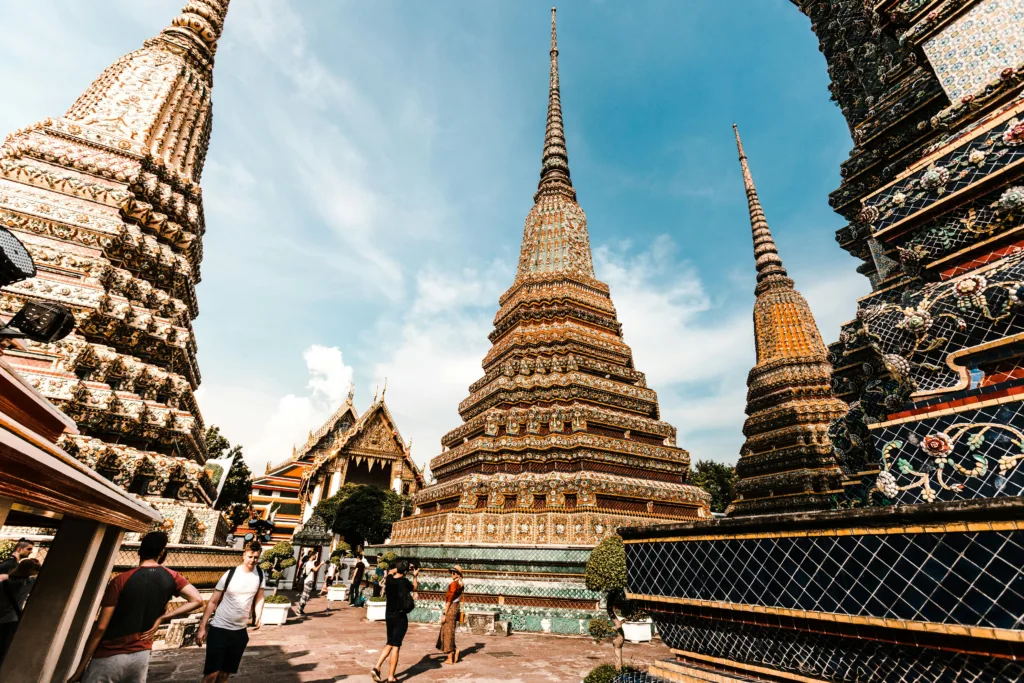
The temple grounds feature beautifully decorated stupas and over 1,000 Buddha images. Wandering through its courtyards, you’ll feel a sense of tranquility amidst Bangkok’s bustling streets. Wat Pho is a place of learning, healing, and spiritual reflection.
3. Wat Arun (Temple of Dawn)
Wat Arun is a shining jewel on Bangkok’s Chao Phraya River and a highlight for anyone looking to explore Thailand. Its central prang, adorned with colorful porcelain, represents Mount Meru, a sacred mountain in Buddhist cosmology. The temple’s design is particularly stunning during sunrise and sunset.
Climbing Wat Arun’s steep steps rewards visitors with breathtaking views of the city and river. The experience is both thrilling and deeply rewarding. It’s a favorite spot for photographers seeking iconic images of Thailand.
So, the temple’s history dates back to the Ayutthaya period and was expanded by King Rama II. Because of its unique aesthetics and historical significance, it makes it one of the most visited landmarks in Bangkok. A trip to Wat Arun promises unforgettable moments.
4. Explore Thailand Through our Favorite Temple – Wat Rong Khun (The White Temple)
Located in Chiang Rai, Wat Rong Khun is a contemporary masterpiece worth visiting when you explore Thailand. Designed by artist Chalermchai Kositpipat, this temple dazzles with its white facade and intricate carvings. The mirrored mosaics create a shimmering effect, symbolizing purity and enlightenment.
Visitors enter the temple by crossing a bridge over a sea of sculpted hands. These hands represent human desires and the journey towards self-liberation. It’s a thought-provoking design that blends modern art with Buddhist philosophy.
Furthermore, inside, murals feature unexpected pop culture references alongside traditional themes. The temple grounds include a gallery showcasing the artist’s work. Wat Rong Khun is a unique fusion of creativity and spirituality.
5. Wat Phra That Doi Suthep
Overlooking Chiang Mai, Wat Phra That Doi Suthep is an iconic destination for anyone wanting to explore Thailand. The temple perches on a mountain and offers stunning views of the city below. Its golden chedi, which houses sacred relics of the Buddha, gleams brightly in the sunlight.
Despite that, visitors can reach the temple by climbing a 306-step staircase adorned with colorful Naga serpents. For those who prefer, a tram is also available. The journey itself is part of the adventure.
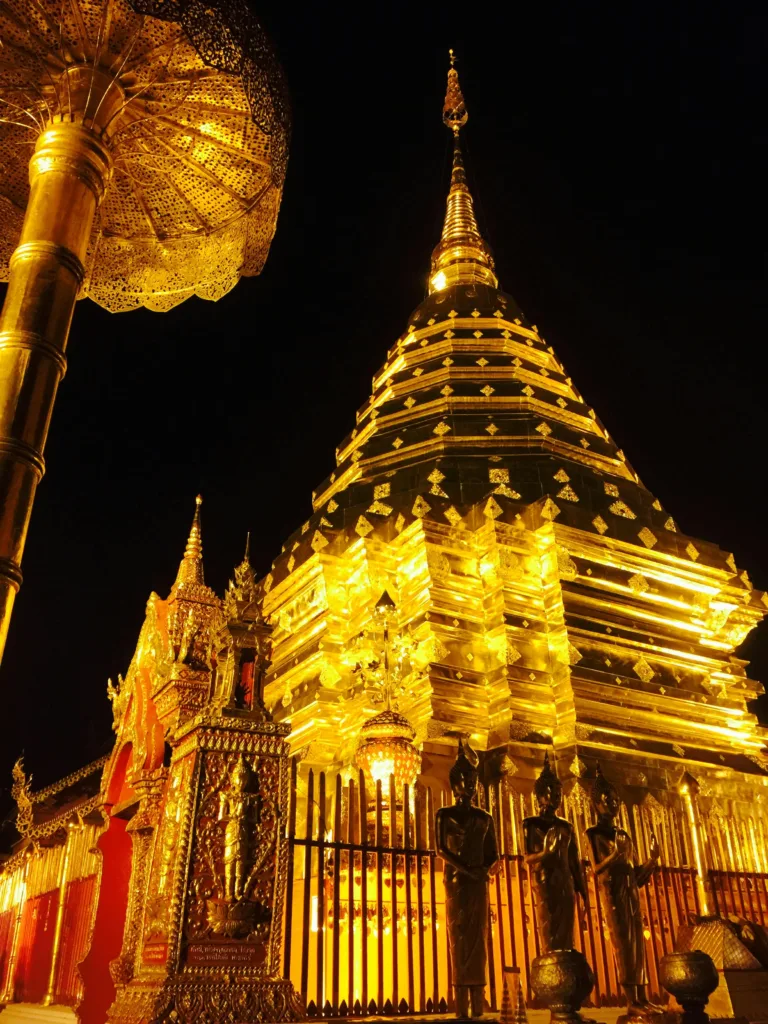
The temple grounds are filled with intricate shrines, statues, and cultural displays. Monks often chant prayers, adding to the spiritual ambiance. A visit to Doi Suthep is both a cultural and a meditative experience.
6. Wat Benchamabophit (The Marble Temple)
Wat Benchamabophit, also known as the Marble Temple, is a stunning blend of European and Thai architectural styles. This temple, located in Bangkok, was built with Italian marble, giving it a unique elegance that stands out among other wats. But, Its symmetrical design and peaceful courtyard make it a serene escape from the city.
Inside the temple, you’ll find a golden Buddha statue, seated in a position that reflects traditional Thai artistry. And on top of that, the surrounding galleries feature 52 Buddha images, each representing different regions and styles of Thailand. The intricate details make Wat Benchamabophit a masterpiece of craftsmanship.
The temple was commissioned by King Rama V in the early 20th century, symbolizing Thailand’s modernization during his reign. It’s especially photogenic during sunrise, when the temple’s golden accents glow in the soft light. A visit to Wat Benchamabophit combines history, spirituality, and artistic beauty.
7. Wat Saket (The Golden Mount)
So, perched on an artificial hill in Bangkok, Wat Saket, or the Golden Mount, is a peaceful retreat with spectacular city views. The temple’s golden chedi is visible from afar, shining brightly under the sun. Climbing its 344 steps takes visitors through lush greenery and small shrines, creating a meditative journey.
Besides that, Wat Saket dates back to the Ayutthaya period but was restored and expanded during the reign of King Rama III. This temple served as a crematorium during a cholera epidemic in the 18th century, giving it historical significance. Today, it’s a place of prayer and reflection.
Despite this, at the top, you’ll find panoramic views of Bangkok and the surrounding neighborhoods. The atmosphere here is serene, especially during the annual Loy Krathong festival when the temple is illuminated with lanterns. Wat Saket is perfect for those seeking tranquility amid the urban buzz of the capital.
8. Wat Traimit (Temple of the Golden Buddha)
Wat Traimit, located in Bangkok’s Chinatown, is home to the world’s largest solid gold Buddha statue. The statue, weighing over 5.5 tons, was accidentally discovered in the 1950s when a plaster covering cracked during its relocation. Its glittering beauty and fascinating history make it a must-see when you explore Thailand.
The temple itself is modest compared to others, allowing the Golden Buddha to take center stage. Visitors can learn about the statue’s history at the on-site museum, which details its origins and rediscovery. It’s a testament to Thailand’s resilience and dedication to preserving its heritage.
Wat Traimit’s location near Chinatown makes it a convenient stop during your Bangkok adventures. Pair your visit with a stroll through the vibrant streets and a meal at a local eatery. Wat Traimit offers a unique mix of history, spirituality, and cultural immersion.
9. Wat Chedi Luang
Wat Chedi Luang, located in the heart of Chiang Mai, is a historic temple that once housed the Emerald Buddha. Built in the 14th century, this ancient temple was partially destroyed by an earthquake in the 16th century. Despite its ruins, the towering chedi remains a majestic symbol of the Lanna Kingdom.
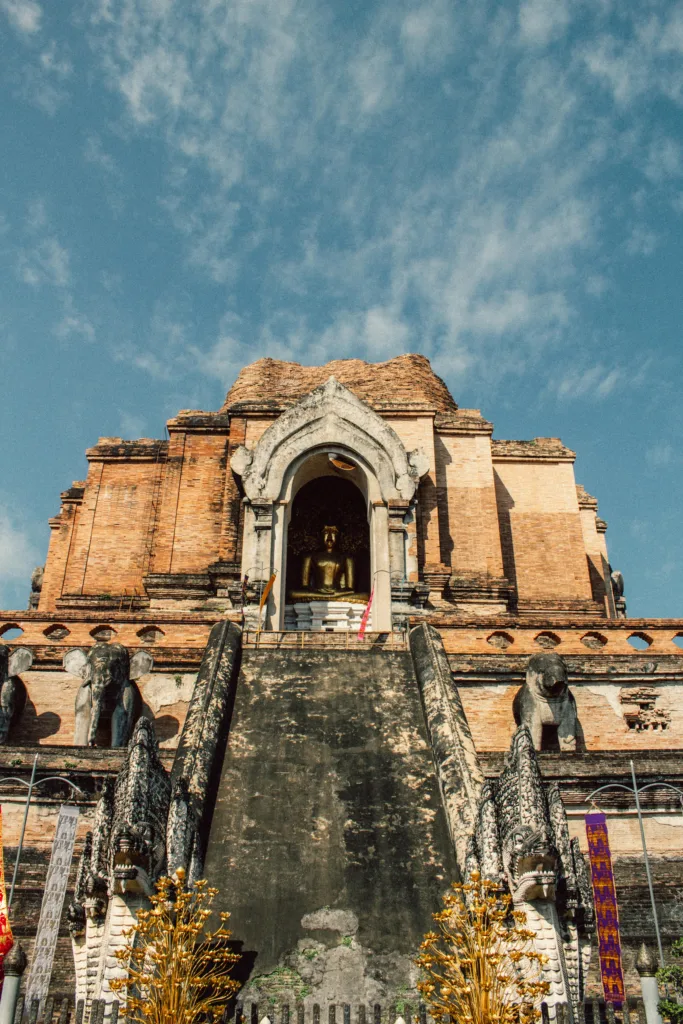
The temple grounds are filled with smaller shrines, a beautiful viharn (assembly hall), and ancient relics. One unique feature is the Pillar of the City, believed to protect Chiang Mai and its people. Exploring Wat Chedi Luang feels like stepping back in time.
And, visitors can engage in daily monk chats, where they can learn about Buddhism and Thai culture directly from the monks. So, the peaceful atmosphere makes it a great place to reflect and unwind. Wat Chedi Luang is a must-visit for history buffs and spiritual seekers alike.
10. Wat Phra Si Sanphet
Situated in Ayutthaya, Wat Phra Si Sanphet is one of the most historically significant temples in Thailand. Once part of the royal palace complex, this temple served as a private chapel for Ayutthaya’s kings. Its three iconic stupas, which contain the ashes of former kings, are a defining feature.
The temple was constructed in the 15th century during the reign of King Borommatrailokkanat. It symbolized the glory of the Ayutthaya Kingdom and was the inspiration for Bangkok’s Wat Phra Kaew. Although the temple was destroyed during the Burmese invasion, its ruins remain a testament to Thailand’s resilience.
Walking through Wat Phra Si Sanphet, you’ll feel a deep connection to Thailand’s royal and spiritual heritage. Because of this, the surrounding Ayutthaya Historical Park offers more sites to explore, making it a perfect day trip from Bangkok. This temple is a fitting conclusion to your journey through Thailand’s most beautiful wats.
Noteworthy Mentions for Neighboring Country Temples When You Explore Thailand
When you explore Thailand, don’t forget to look beyond its borders to experience other extraordinary temples in neighboring countries. Cambodia’s Angkor Wat is a masterpiece of Khmer architecture and the world’s largest religious monument. Its intricate carvings and grand design make it a bucket-list destination for travelers.
Myanmar’s Shwedagon Pagoda is another must-see, with its glistening gold spire and sacred relics of four Buddhas. The temple’s illumination against the skyline makes it particularly beautiful at night. Its serene atmosphere makes it a deeply spiritual experience.
Laos offers the stunning Pha That Luang in Vientiane, a national symbol of pride and faith. This golden stupa stands surrounded by peaceful gardens and reflects Laos’s rich Buddhist heritage. Including these temples in your itinerary adds a richer, regional perspective to your Southeast Asia adventure.
Things to Remember When Visiting Temples
- Dress Modestly: Always ensure your shoulders and knees are covered as a sign of respect. Carrying a light scarf or sarong can be helpful for impromptu visits.
- Remove Shoes: It’s customary to take off your shoes before entering sacred areas. Many temples provide racks or designated spots for footwear.
- Show Respect: Avoid pointing your feet toward Buddha statues, sitting higher than monks, or engaging in loud conversations. Following these etiquettes ensures a harmonious experience for everyone.
How to Explore Thailand – Book Tours or Visit Thai Temples
So, booking a guided tour is the easiest way to explore Thailand’s temples without missing key details. Platforms like Klook, GetYourGuide, or local travel agencies offer curated experiences that include transportation, entry tickets, and knowledgeable guides. These tours often combine multiple temples for an efficient and enriching day.
Furthermore, for independent travelers, renting a scooter or using Songthaews (shared taxis) allows you to explore temples at your own pace. Cities like Bangkok and Chiang Mai have temples conveniently located near each other, making self-guided tours a breeze.
Because of this, many temples also offer unique programs, such as meditation retreats or cultural workshops. But, participating in these activities not only deepens your understanding of Thai spirituality but also provides a memorable, hands-on experience.
FAQs About Exploring Thai Temples
- What is the best time to explore Thailand’s temples?
Early morning is ideal for cooler weather, fewer crowds, and serene experiences. But, honestly, we recommend Thailand AT ANY time! - Are there entrance fees for temples?
Yes, most temples charge a small fee, typically ranging from 50 to 200 THB. - Can I take photos inside Thai temples?
Visitors can usually take photographs outdoors, but they should be cautious—some sacred areas may prohibit photography. Always check signage or ask temple staff.
So, exploring Thailand’s temples is an unforgettable journey through history, culture, and spirituality. From the ancient ruins of Ayutthaya to the contemporary marvels of Chiang Rai, each temple offers a unique story that visitors can discover.
So, we truly hope this guide inspires you to create lasting memories as you explore Thailand and its rich cultural heritage. Furthermore, make sure to check out our recent post on Chiang Mai where we break down a 5-day itinerary that we know you’ll love!
Safe travels and happy temple-hopping!
Vick & Ellie
